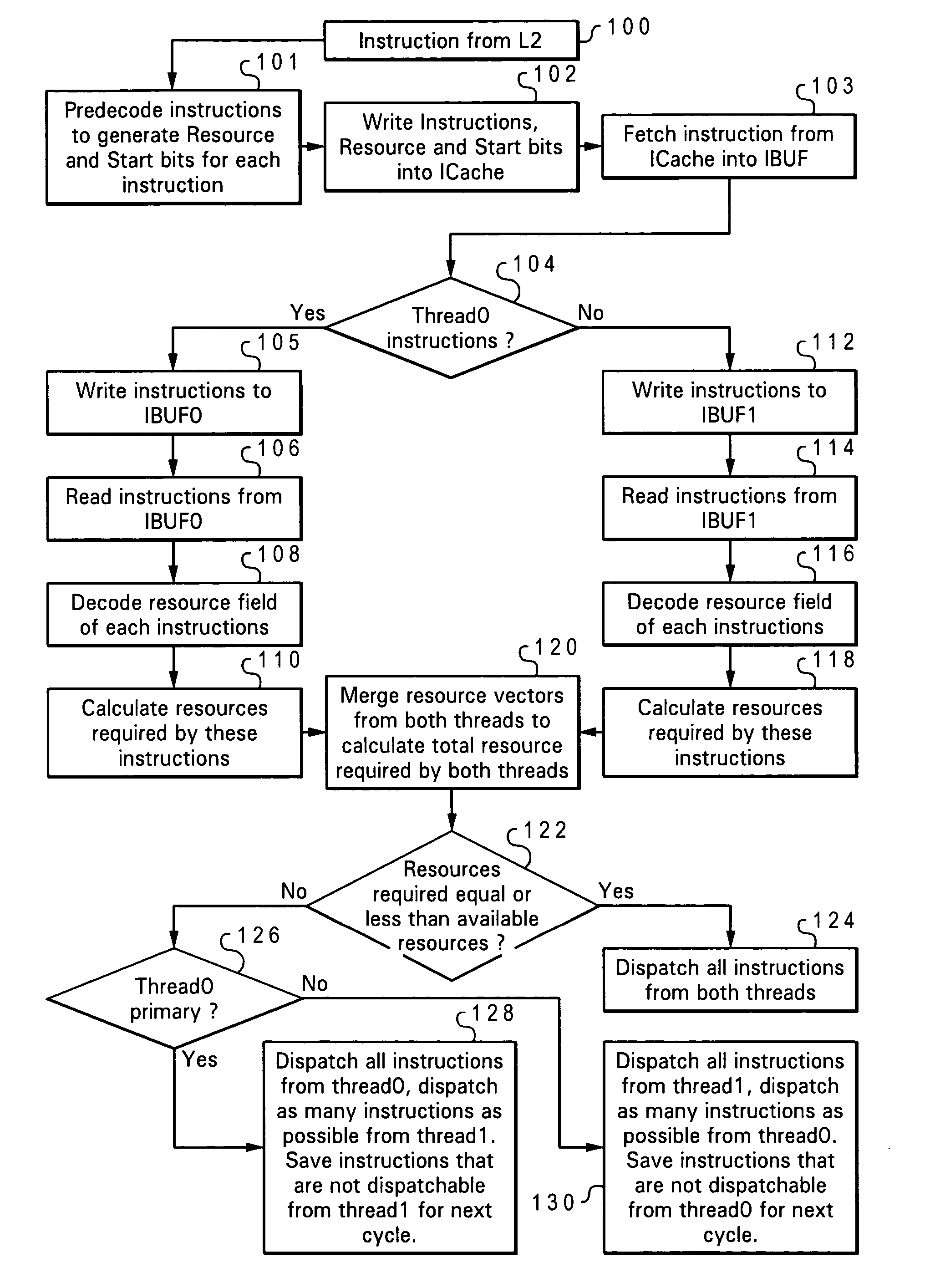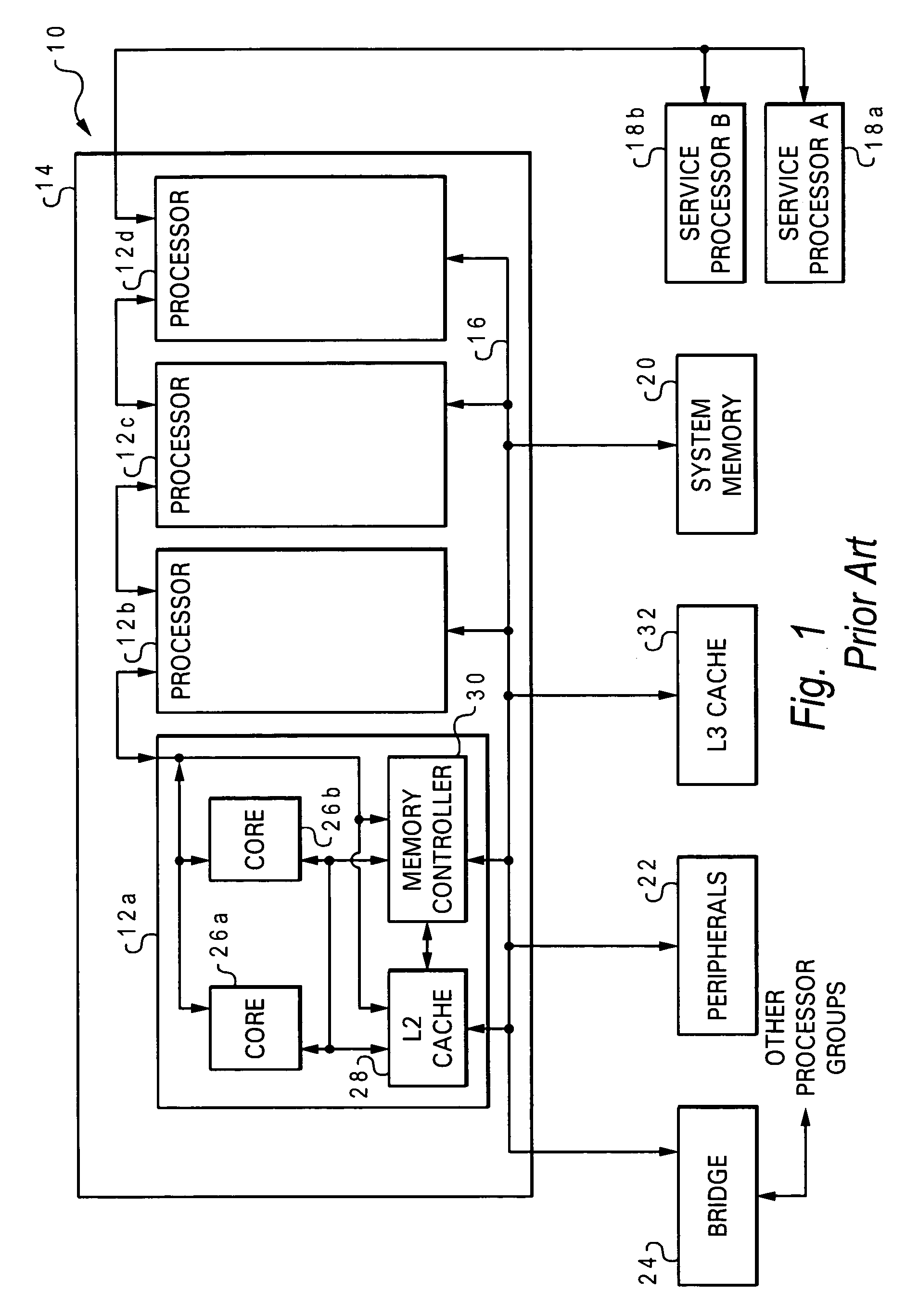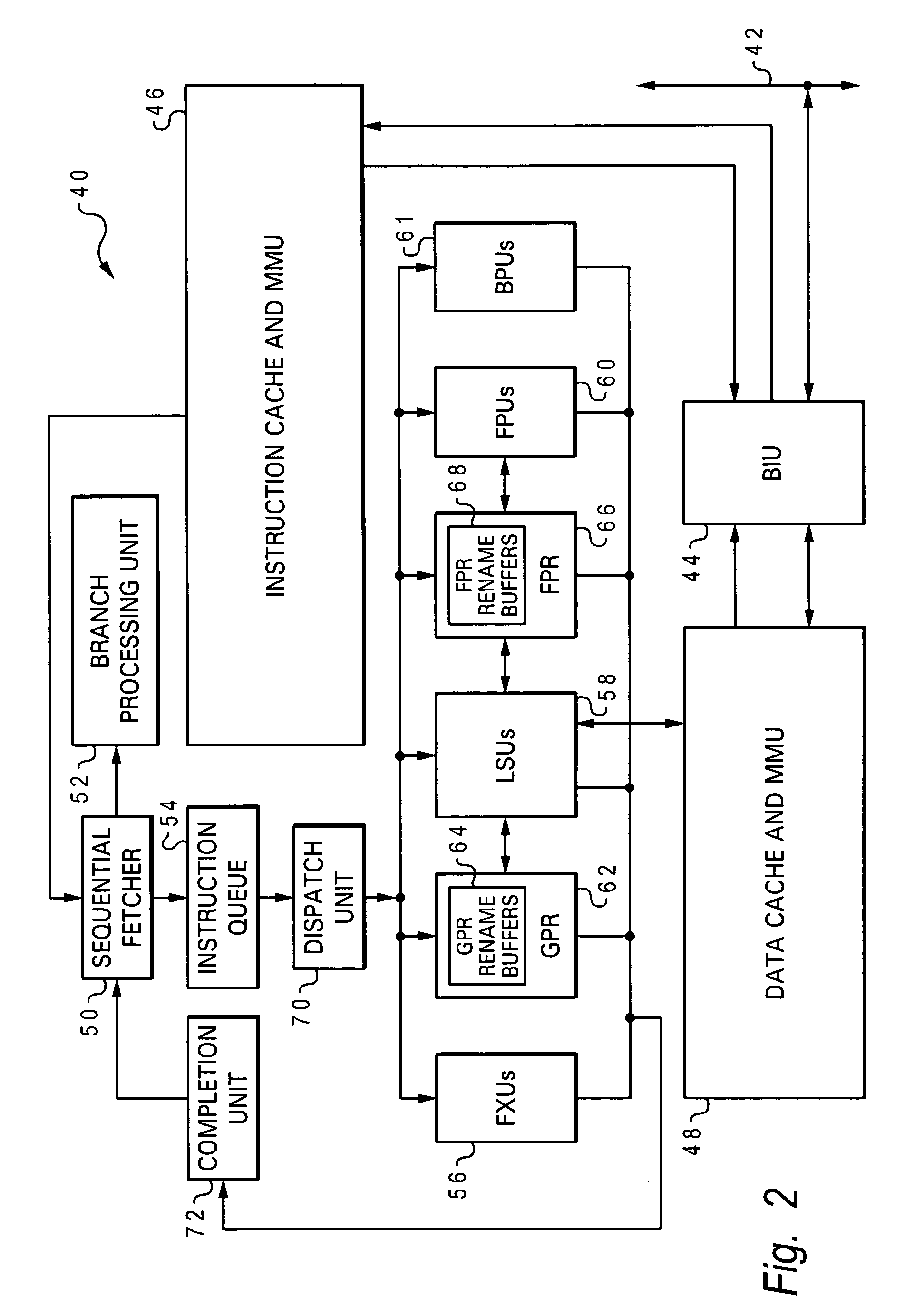Instruction group formation and mechanism for SMT dispatch
a technology of instruction group and instruction, applied in the field of computer systems, can solve the problems of two threads not being dispatched in the same cycle, per-thread instruction-level parallelism, performance disadvantages of smt processing, etc., and achieve the effects of increasing the dispatching bandwidth, increasing the overall processor throughput, and efficient use of hardware resources
- Summary
- Abstract
- Description
- Claims
- Application Information
AI Technical Summary
Benefits of technology
Problems solved by technology
Method used
Image
Examples
Embodiment Construction
)
[0025] With reference now to the figures, and in particular with reference to FIG. 2, there is depicted one embodiment 40 of a computer processor constructed in accordance with the present invention. Processor 40 is generally comprised of a single integrated circuit superscalar microprocessor, and includes various execution units, registers, buffers, memories, and other functional units (explained further below), which are all formed by integrated circuitry. Processor 40 may operate according to reduced instruction set computing (RISC) techniques. Processor 40 is coupled to a system or fabric bus 42 via a bus interface unit (BIU) 44 within processor 40. BIU 44 controls the transfer of information between processor 40 and other devices coupled to system bus 42, such as a main memory (not illustrated), by participating in bus arbitration. Processor 40, system bus 42, and the other devices coupled to system bus 42 together form a host data processing system. Those skilled in the art w...
PUM
 Login to View More
Login to View More Abstract
Description
Claims
Application Information
 Login to View More
Login to View More - R&D
- Intellectual Property
- Life Sciences
- Materials
- Tech Scout
- Unparalleled Data Quality
- Higher Quality Content
- 60% Fewer Hallucinations
Browse by: Latest US Patents, China's latest patents, Technical Efficacy Thesaurus, Application Domain, Technology Topic, Popular Technical Reports.
© 2025 PatSnap. All rights reserved.Legal|Privacy policy|Modern Slavery Act Transparency Statement|Sitemap|About US| Contact US: help@patsnap.com



